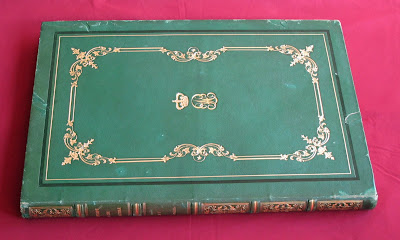After Sharon & I got married, our first overseas assignment together was to Mogadishu. At that time (1987), the Somali capital was a sleepy Arab-African port city on the ancient trade routes from Zanzibar to India via Kenya and Aden. It was a safe city, we had a pretty splendid house (less splendid when we had no water and/or electricity) and we were able to make friends fairly quickly.
The first sign of trouble for us was in 1988 with the bombing of the Isaaq population in the northern city of Hargeisa by South African & ex-Rhodesian mercenary pilots on President Siad Barre’s payroll. These air attacks claimed tens of thousands of casualties. Although there had been some trouble in Mogadishu when, in July 1989, the Italian Bishop Pietro Salvatore Colombo, had been killed, we assumed that Barre had things under control in the capital.
Later that month, Sharon was invited to a Somali wedding and I took a newly-transferred expat administrator and his wife to lunch at a beach restaurant in the city. One of the waiters mysteriously said that we should lay low that afternoon but I had no idea what he meant. Driving back to the Amoco staff house, we ran into a huge crowd of exited Somalis running towards us. It soon became clear why. They were fleeing “technicals” (small trucks with mounted machine guns) that were indiscriminately firing on them. Amazingly, some Somalis took the time to stop and pick up rocks with which to stone our vehicle and that only added to the chaos. Deciding that this was no place to be, I spun the Landcruiser around, headed for ”bush” and then made a wide detour back to the staff house. Only hours ago I had been telling the new expats what a safe place Mogadishu was and so when I yelled at them to get down flat on the on the Landcruiser floor, my credibility suffered somewhat.
I found out later that Sharon had gone to meet some of her friends and co-workers at USAID before going to the wedding but once the gunfire started, the US Marines forbid any of the Embassy staff to leave the compound where they were relatively safe. It was the next day before she was escorted back to our staff house. Phone service in Mogadishu was always pitiful and so the Embassy allowed her to bring a VHF radio with her to allow us to keep in touch with State Department staff.
I managed to coral all Amoco personnel at the staff house and we implemented a Company curfew that was one hour “tighter” than the official one that was imposed in the mornings and evenings in response to the rioting by the Hawiye clan. It later transpired that hundreds had been killed in the protests.
It was a surreal time for us. Gun and mortar-fire all around, a finite amount of food and minimal communication with the outside world and no knowing what the outcome of this crisis would be. Across the street we saw another foreigner's house being looted and I knew that we had no real protection in our own staff house. Neither the walls nor the “guards” would offer any protection if it came to the crunch. As it turned out the residents of the looted house were inside at the time, hiding in wardrobes. They later managed to get across to the street to us where I reluctantly offered them refuge. Reluctant because they were actually missionary workers purporting to be teachers; that is why their house had been targeted. Would the same thing now happen to us?
Siad Barre cracked down hard on the Hawiye dissidents in Mogadishu with dozens of extrajudicial executions on Jezeira Beach. For the next few months, things quieted down but still with odd outbursts of unrest and violence although we were able to return to our own houses. Ironically and somewhat surprisingly, I do not recall being really “scared” during the tumult although we certainly should have been. Before too long my own transfer to Denver was announced and we did manage to ship our belongings out of the country. With the help of a “facilitator”, we eventually got permission from the teetering Government to bring in the Amoco plane from Kenya. It quietly slipped in before dawn one morning and we left just as the sun was rising. An Amoco administrator in Nairobi had gone over to the pilots’ house the night before with champagne and chocolate-covered strawberries. It made an oddly surreal breakfast as the small plane climbed away from the doomed city and we left Somalia behind forever. Not too long thereafter, the country collapsed into total anarchy from which it has never recovered.
























